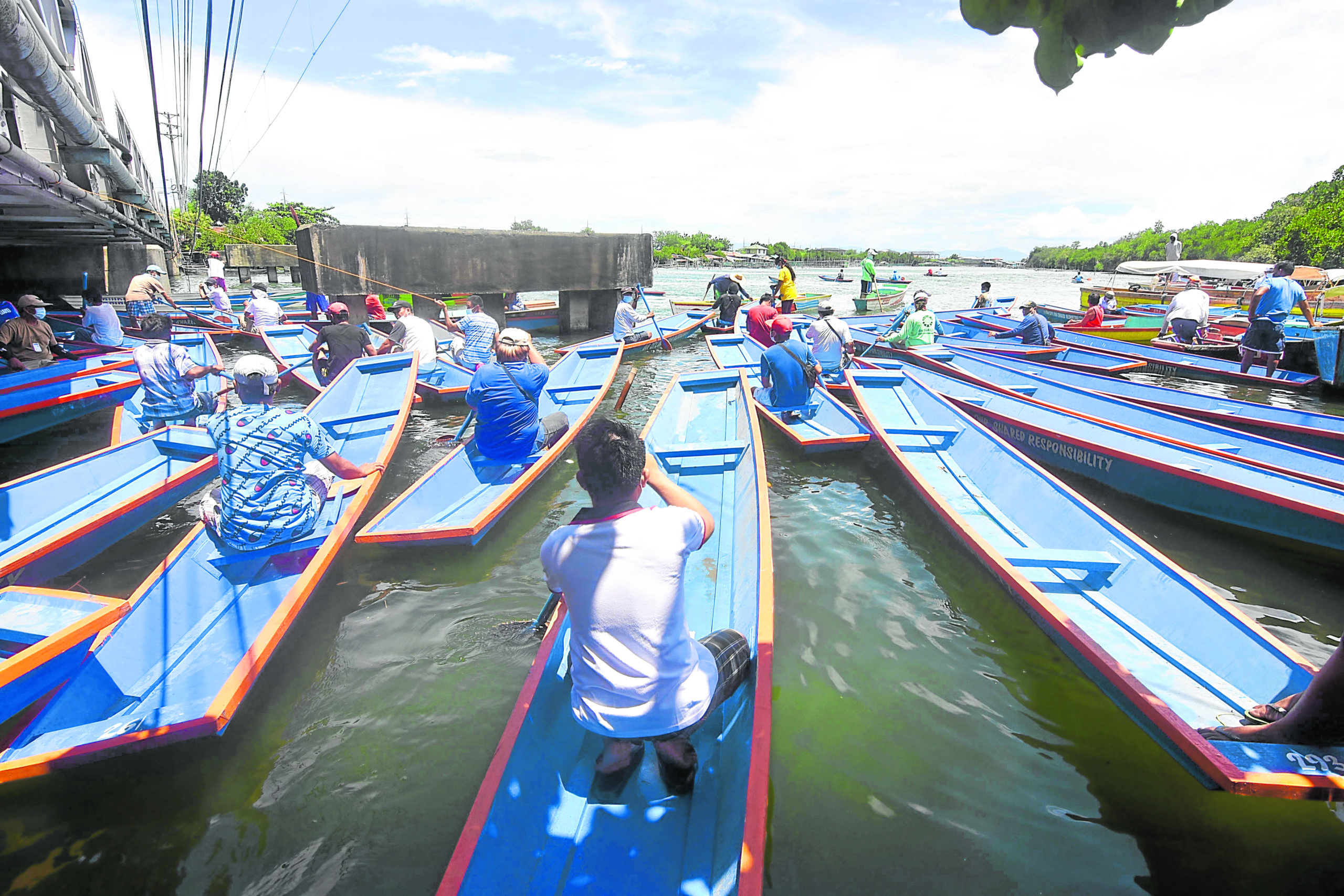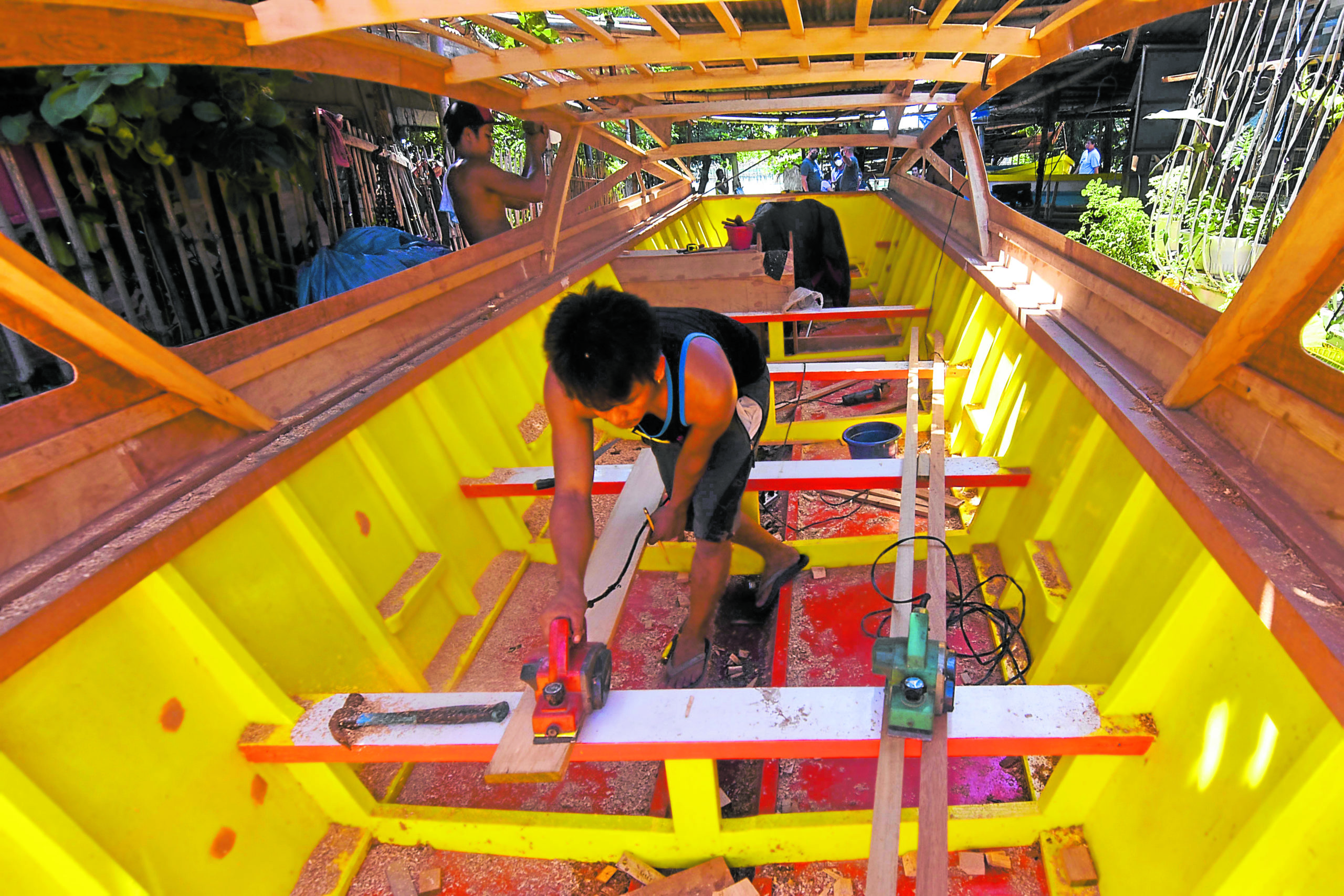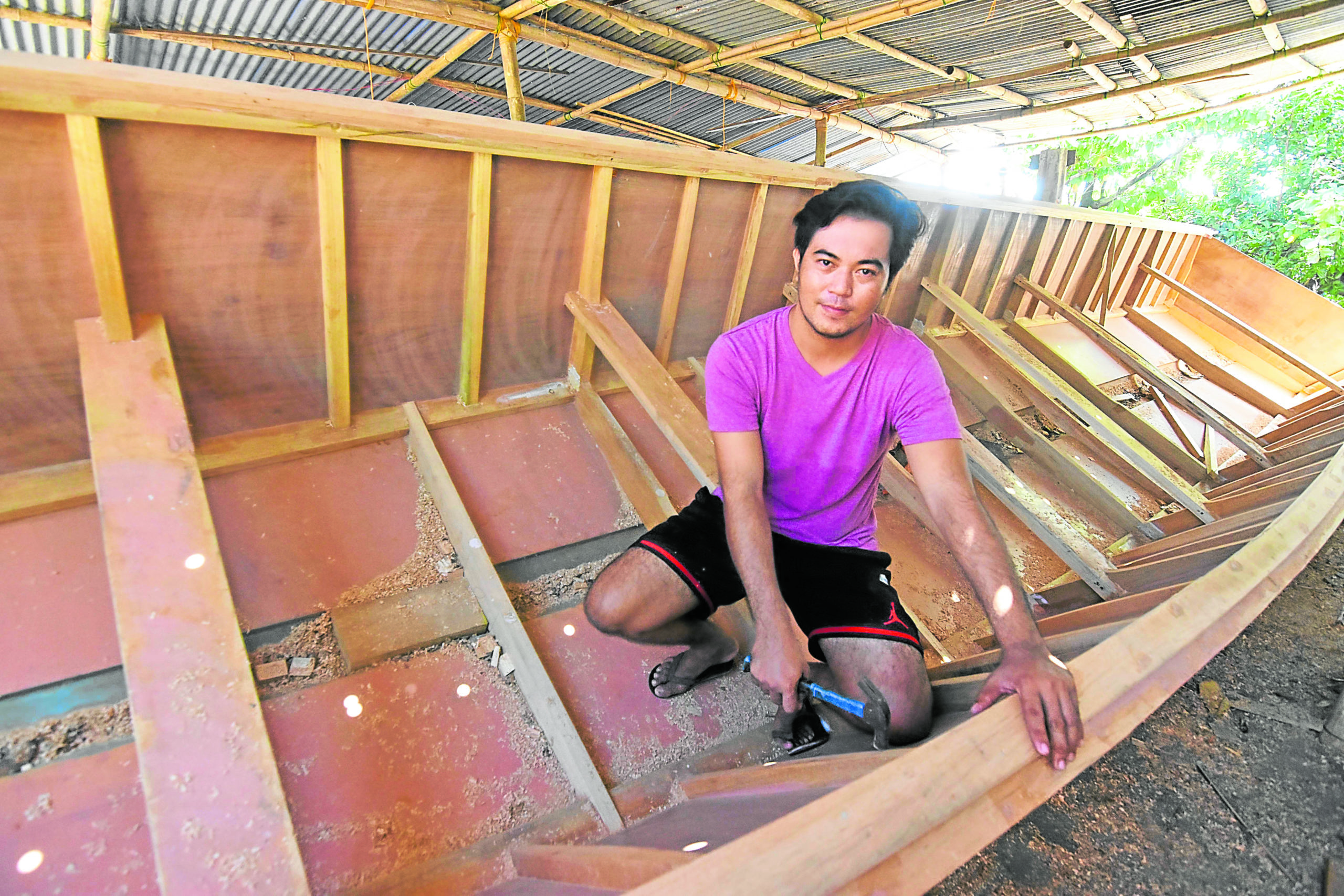Dagupan boat makers won’t sink in pandemic

LOCALLY MADE The more than 200 boats distributed by the Dagupan City government to small fishermen in Pangasinan’s “bangus” (milkfish) capital since 2019 come from the backyard workshops of boatbuilders in the island village of Pugaro. —PHOTOS BY WILLIE LOMIBAO
DAGUPAN CITY—In the island village of Pugaro here, old camachile trees lining the banks of the Pantal River provide shade to an outdoor workshop for the community’s boatbuilders.
“These [two vessels] are for fishing. That one is a passenger boat and this one, which can carry up to 20 people, is for a resort in Sual [town, also in Pangasinan province],” said Lot Caballero, 34, of the boats he and six others were making.
Caballero owns “Caballero’s Boat,” one of the backyard boatbuilders operating in Barangay Pugaro here. He is a third-generation boatbuilder in a family trade started by his grandfather, who as a young man had settled in this city from Bolinao town’s Santiago Island.
Dagupan’s boat-making industry itself was already around before Caballero’s grandfather moved to the city in the 1940s, given that Dagupan is crisscrossed by seven rivers.
With five island villages, boats have been the means of transporting people and goods throughout Dagupan for centuries, or at least since boat building in Pangasinan was first recorded in the late 1700s.
Article continues after this advertisementIn his book, “History of Dagupan,” the late Pangasinan historian Restituto Basa wrote, “Dagupan settlers knew how to make boats. It was a matter of necessity. As the volume of trade grew, it became more necessary to make more and bigger boats.”
Article continues after this advertisement
EXPERT HANDS Their skills honed by years of toiling in small workshops or mentored by master boatbuilders, workers in the village of Pugaro in Dagupan City build boats for fishing, tourism, and transport using quality materials and simple tools.
Naval base apprentices
Several boatbuilders from Pangasinan had apprenticed in shipbuilding at the Spanish naval base in Cavite province, Basa said, citing Jesuit historian Horacio de la Costa who penned accounts about the country in 1780. These apprentices returned to Pangasinan and put up a shipyard of their own.
No shipyard exists in Dagupan now because the rivers have become shallow due to siltation, and only small fishing and passenger boats are able to navigate these waterways.
But the boat-building industry thrives through four families in Pugaro, such as the clan of Caballero, who turned his yard along the Pantal River into his workshop.
Caballero was only 15 when he started learning the trade from his father Vicente. He was the youngest of seven children, with the eldest, Edgar, venturing first in the family business before later making a living by marketing fish.
“I was my father’s helper and I learned the ABCs of building boats. When I got married at 21, I decided to start my own business to support my family. I began making boats for local fishermen,” he said.
In 2011, Caballero’s fledgling business got a big break when then-Mayor Benjamin Lim (now deceased) launched a river cruise project that would sail along the Dawel-Watac River.
“He showed me photos of the cruise boats in Loboc River (in Bohol province) and asked me if I could do the job. I said I could,” said Caballero, then only 24 years old.
“We built boats that would carry nipa houses. Since I had no experience in building nipa houses, we hired carpenters to do that part of the cruise boats,” he recalled.
River cruise
When the river cruise opened, Lim never failed to mention Caballero’s name, and had proudly credited Pugaro’s other boatbuilders.
Lim’s son Brian, now the city mayor, said the river cruise not only showcased the city’s relatively pristine rivers but also bolstered the boat-making trade and the city’s “bangus” (milkfish) industry.
The spotlight generated orders in Dagupan and other coastal towns, Caballero said.
When tourism was at its peak at the Hundred Islands National Park before the COVID-19 pandemic struck, Alaminos City residents engaged in the ferry boat business had contracted Caballero to build, upgrade or repair passenger boats.
But tourism took a heavy hit, with arrivals dropping to zero, when Luzon was locked down and various degrees of community quarantine took effect starting March last year.
Dagupan’s boat makers, however, stayed afloat in turbulent waters, sustaining villagers’ livelihood. When the Inquirer visited Pugaro Island on Sept. 30, five boats were being built while several other vessels awaited repairs.
In April, the city government commissioned Caballero to build more than a hundred fishing boats, which were given out to marginalized Dagupan fishermen.
Caballero worked with other boatbuilders in his community to meet its contract with the city government.
“Since the other boatbuilders have not registered their businesses, they cannot get contracts from the government. But everyone was happy when [Caballero] shared the job with them,” said Pugaro village chief Ricardo de Guzman.

HELPING OTHERS Lot Caballero, who runs the family-owned boat building shop in Barangay Pugaro, taps local workers to ensure that his venture will generate jobs in their community.
Another opportunity
The city’s bangus industry offered another business opportunity for boatbuilders.
Fish pens are located in the middle of the rivers, so operators and workers have to use boats to bring fish feed and other materials to the pens, and to transport newly harvested bangus to the mainland.
Caballero said he made a name by using Grade A materials.
“We do not accept labor only, with the client providing the materials. If they insist, we list the brands of materials that they would provide us,” said Caballero’s wife, Brenda, who runs the business alongside her husband.
Their nails, for instance, need to be made of copper. “We do not use ordinary boat nails which could rust and stain the boat in the long run,” Brenda said.
Caballero hires workers who are experts in producing boat parts, such as wooden roofs for tourist ferry boats in Alaminos City and for resort towns.
He has been maintaining a fleet of river cruise boats at the Dawel-Watac River, keeping them in shape even if they are idle so they will be ready when local tourism resumes as health and travel restrictions ease.